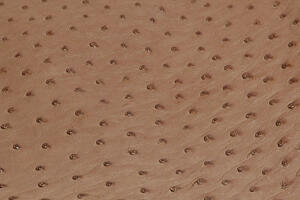 The world of high-fashion garments is an incredibly competitive space. Every year, fashion designers from all over the world do their best to try to outshine the competition with creative, bold new designs, superior craftsmanship, and the best quality materials.
The world of high-fashion garments is an incredibly competitive space. Every year, fashion designers from all over the world do their best to try to outshine the competition with creative, bold new designs, superior craftsmanship, and the best quality materials.
Leather garments make for a distinctive look and feel—one that is leagues different from regular fabrics. However, not just any leather will do when you’re trying to make a statement and stand out from the throng of competitors in the fashion industry.
Exotic leathers will set you apart, whether you’re making dresses, jackets, pants, or any other large garment item. But which exotic leather is the best material for a garment?
Different exotic leathers have different properties that could make them ideal for a garment project. In general, for garments people need skins that are large enough to mitigate paneling, soft enough to be comfortable to wear and flexible enough to be able to bend and stretch without creasing. Here’s our short list for the exotic skin that meet that criteria (in order from least to most expensive per usuable area):
Eel Skin
When you think of eel, you probably think of a skin that is 2 inches wide and 12 inches long. However, the eel skins stocked by Pan American Leathers come in panels measuring 2 feet by 5 feet that can easily fill large garment cuts. These panels are made of nearly eighty individual eel skins seamlessly joined together.
The panels are exceptionally soft and flexible, making them easy to cut and join together for the manufacturer, and comfortable and lightweight for the end customer. They are also large and rectangular which minimizes additional paneling and makes calculating yields fairly straightforward.
Also, eel skin is incredibly affordable compared to many other exotic leathers, making it relatively painless to order in bulk for larger production runs.
Python Skin
 Python skin is an incredibly popular exotic skin choice for making garments for a number of reasons.
Python skin is an incredibly popular exotic skin choice for making garments for a number of reasons.
With larger skins reaching more than 3.5 meters in length (over 10 feet) and 30+ centimeters wide (over one foot), these skins can fill large panels with ease. Plus, the main source of these skins is from farms, so it’s relatively easy to find defect-free grade I skins.
The flexible nature of python skin makes it easy to work with. This flexibility also means that the hide won’t show crease marks as easily when flexed, prolonging the useful life of any garment made out of python hide. Like the eel, the python is extremely soft and flexible, making it easy to cut and sew and very comfortable to wear.
Finally, python skins have a highly unique and striking aesthetic value. The natural scale patterns found on different species of python can easily be used as the focal point of a design. At any rate, the look of a python skin helps to distinguish it from typical leather goods.
Ostrich Skin
 Ostrich skin has a few special characteristics that make it ideal for leather garments. However, it’s important to note that there are also challenges that are unique to ostrich leather. For example, when ordering ostrich skin for garments, you may need to specify that you’re ordering “garment weight” skin rather than standard-weight skins.
Ostrich skin has a few special characteristics that make it ideal for leather garments. However, it’s important to note that there are also challenges that are unique to ostrich leather. For example, when ordering ostrich skin for garments, you may need to specify that you’re ordering “garment weight” skin rather than standard-weight skins.
On average, garment weight ostrich skins give you 16 square feet of material, and are between 0.6 and 0.8mm thick. These skins give you exceptional softness to work with to create garments that are not only beautiful, but comfortable to wear.
This comfort does come at a premium, as garment-weight skins tend to be 10-20% more expensive than standard skins of the same color and grade.
Additionally, with ostrich leather, you’ll need to consider whether you want to use only the full quill portion of the hide, or both the full quill and the partial/no quill portions. If you only want to use the full quill portions of the hide, you’ll need to order extra, as only 2/3 of the hide is full quill—the rest is partial or no quill.
Alligator Skin
Alligator skin is a real show-stopper for garment projects. Not only are these hides soft and flexible, they have very distinctive scale shapes that make them immediately identifiable to all who see them.
Garment sized alligator skin can fit large garment panels. An average size garment skin yields a center belly square cut of 45 cm (or 17 inches). Of all the crocodilian species, alligator skins are one of the least bony—which is why they top our list of favorite skins to work with for garments over Nile crocodile skin and caiman skin.
One major caveat to using alligator skin for garments is that finding large, grade I or II hides can be difficult since they’re in such high demand and such short supply. However, if you get the chance to work with alligator hide for a garment project, it’s an opportunity you’ll want to take advantage of.
All of the skins in the above list are excellent materials for making high-fashion garments. For more information, check some of our other blogs, as we’ll be covering the strengths of each of these hides in more detail.
Or, you can get started with your exotic skin order today!



